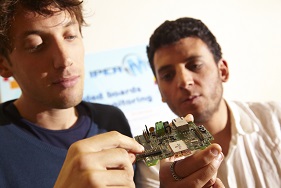Innovative wireless technology that gathers information on parking and traffic flows has the potential to help towns better manage circulation.
New intelligent transport system to help beat congestion in Tuscany
- 05 August 2013
The project represents a first attempt at integrating mobility services into a scalable, heterogeneous, pervasive, and real-time apparatus composed of low-cost and low-impact hardware and software components.
A two-year project has developed new ways of gathering data on the position and movement of vehicles using technology embedded in the ground. This information is then processed and transmitted, using a wireless network, to a control centre where it can be shared with infrastructure planners.
Thanks to this technology, municipalities and road operators have the possibility to continuously monitor and control traffic flows and parking facilities and react in real-time to the build-up of congestion.
Benefits for public and environment
This ability to react will lead to decreased congestion, helping car-users travel more easily and quickly, especially at peak times of the day and year, and to plan their journeys more efficiently. It will also enable the better management (such as releasing more spaces at busy times) of parking facilities.
Enhancing traffic flows will also help avoid the build-up of pollution due to traffic congestion, thus improving air quality in towns and cities. The technology itself is also environmentally-friendly, as it is non-invasive and sustainable, and low-cost as it can cover large urban areas.
It was tested at Pisa's Galilei International Airport where sensors were installed to monitor spaces in two car parks and measure traffic flows around a section of the airport. To share their findings, a public demonstration was held on 18 May 2011 during which the technology was presented and its transfer to industry and the potential opportunities for business outlined.
Ongoing legacy
IPERMOB’s achievements have also led to it being recognised as a “project of excellence” by the Region of Tuscany.
Since the project has come to an end, a number of its prototypes have been released as commercial products. The technology continues to be developed in the framework of other EU-funded projects and discussions are underway with the Region of Tuscany to potentially extend its use to freight transport in the busy port of Livorno. It also has the potential to be developed for use by the public.
Total investment and EU funding
Total investment for the project "IPERMOB: Infrastruttura Pervasiva Eterogenea Real-time per il controllo della Mobilitá" (A Pervasive and Heterogeneous Infrastructure to control Urban Mobility in Real-Time) was EUR 3 346 966, with the EU's European Regional Development Fund contributing EUR 798 028. The project is funded through the priority “Research, development and technological transfer, innovation and entrepreneurship” of the Operational Programme "Tuscany" for the 2007-2013 programming period. The Region of Tuscany is itself contributing EUR 1 706 768 to the project.

